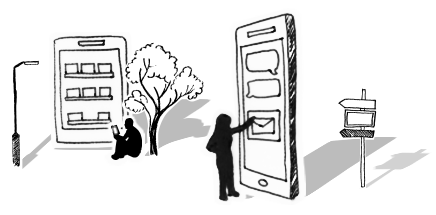




The Importance of Storytelling for Business Change
With continual change becoming the new norm for modern business, the chances are, no matter what industry or sector you work in, that you’ve experienced work-based change first-hand at least once during your career.
Most of us are able to recount our experiences of being involved in change to varying degrees, and we most certainly have our opinions on whether we feel we really understood the ‘what’, ‘why’ and ‘how’.
Let’s be honest, business case language can be fairly dry and statistics can be pretty dull on their own – they aren’t compelling to the majority of the workforce and certainly don’t convey a meaningful story. But, all too often, we hear of organisations who haven’t adequately considered their change story, what it means to the organisation outside of the boardroom, and how they are going to ensure that all areas of their workforce really understand it and get behind it. I’m sure that most of you reading this have experienced business change where you were left thinking ‘why are we doing this, and what does this mean for me?’
So what’s the importance of the change story?
We know that people are much more likely to get on-board with organisational change if they feel they understand the ‘why?’ This includes the reason for change, and for changing right now, what the change looks like, and most importantly – what it means for them.
This means taking the business case as a starting point and turning it into a meaningful, honest narrative which speaks to everyone.
As change and communication experts, we know that you won’t find the whole story in the boardroom. You need to build up a rounded picture, and this could involve desk research (engagement surveys, for example), benchmarking surveys, focus groups and one-to-one interviews with people from the affected teams.
There are a number of ways to extract the narrative and co-create the story with people, building on the business case
- Find out how things work at the moment – how does ‘stuff’ get done and do people think it generally works well? If there’s a consensus that it doesn’t– why is that?
- Explain why things are changing and ask how and why the old ways of working can be improved.
- Explain what will happen if the business doesn’t change.
- Ask how people think they can go about changing – what do they need to commit to, where will they need support and are there any ‘quick wins’ which can help to get things moving forward.
Read our blog post on Storytelling techniques
Weaving the story into communications and engagement
After the story is uncovered there are a range of options to bring information, like statistics, the business case and details of technology-change to life.
The one-pager
The communications framework is your one-page summary of the story. It will contain facts but also the key messages, the language, and learnings from the engagement and discovery work. Once you have this narrative recorded, your subsequent communications can carry the story and bring it to life.
Smart visual identity
a key part of telling the story is how it looks. A consistent visual identity will complement your core messaging and bring the story to life. This is your opportunity to create something visually compelling which provokes interest and curiosity and helps to bind your communications.
Characters
These give depth to a story and if you use names, department and showcase actual roles, people identify with them and trust the story more.
Using visuals
Infographics are helpful in visually showing statistics in a way that tell a story which involves data, in clear, simple terms.
Build the story as you go along
Building upon the story throughout the change ensures that it stays relevant and helps to keep people connected to it. A great example of this is helping people to create videos of their experiences – it means they get involved in telling the story and owning it. We’ve seen some great outputs from people working on the front line whether on rigs, on the rail or at local offices, and the result works well to unite people working in different places with similar experiences.
To get the latest change tips, advice and guidance directly to your inbox, sign up to our monthly Business Change Digest.
